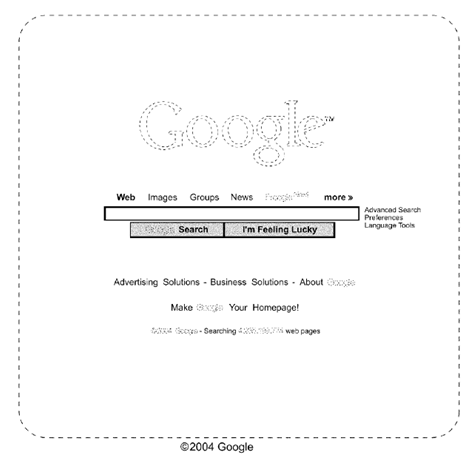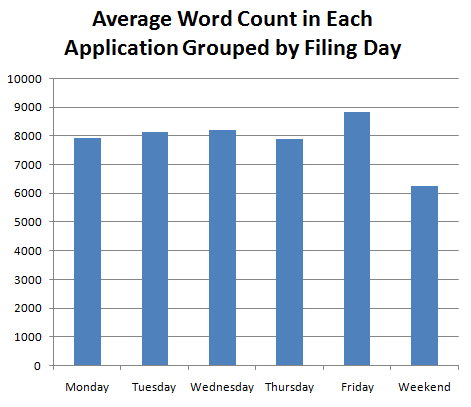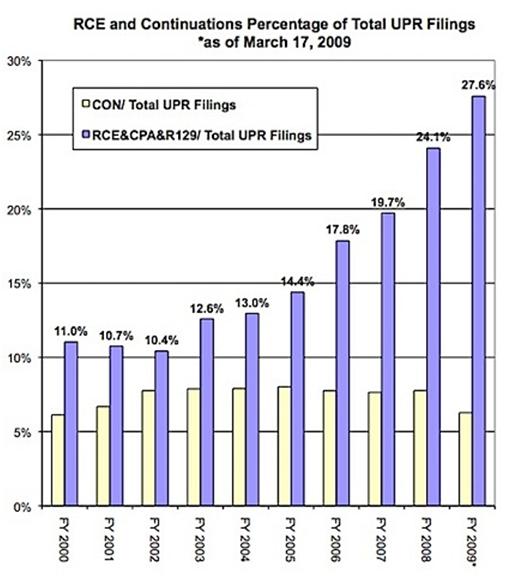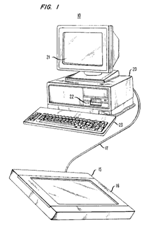
Lucent’s patent-in-suit claims was filed in 1986 and generally focuses on using an on-screen keyboard to enter information into a computer. In 2002, Lucent sued Microsoft and others for infringement. Since then, the patent has expired, but the litigation continues over past damages. Perhaps most notably, this case may serve as a reminder that a twenty year patent term represents a major span in the worlds of business and technology.
The primary infringing portion of Microsoft’s software appears to be the “date picker” function found in Microsoft calendars. In litigation, the jury sided with Lucent and awarded the patent holder with $350 million in damages. Here, I discuss three aspects of the opinion: damages; obviousness; and inducement.
Damages: Most of the action in the Federal Circuit decision revolves around damages. The parties appear to agree that Microsoft sold 110 million accused units with a total sales value of $8 billion. Based on that figure, Lucent requested $561 million in damages based on an 8% royalty rate of Microsoft’s sales revenue. Microsoft argued that the correct licensing rate should result in only $6 million lump sum in damages. On appeal, the Federal Circuit vacated the $350 million dollar award and remanded for a new trial solely on the issue of damages – finding that the original verdict was not supported by substantial evidence.
Reasonable Royalty Calculation: The Patent Act requires that a court award damages at least in the amount of a “reasonable royalty.” The hallmark of that calculation involves a hindsight reconstruction in an attempt to calculate the patentee’s differential “pecuniary condition . . . if the infringement had not occurred.” This is often done through a “hypothetical negotiation” reconstruction based on the Georgia-Pacific factors. See Georgia-Pacific Corp. v. U.S. Plywood Corp., 318 F. Supp. 1116, 1120 (S.D.N.Y. 1970); see also Rite-Hite Corp. v. Kelley Co., 56 F.3d 1538, 1554 n.13 (Fed. Cir. 1995) (en banc).
Entire Market Value: When a patentee proves that the patent related feature serves as the predominant basis for customer demand, courts allow damages to be based upon the “entire market value” of the product (i.e., 8% of the sales revenue of Microsoft Office) rather than focusing on the incremental value of the innovation. Here, the Federal Circuit held that the “only reasonable conclusion” is that the date-picker function is not a substantial driver of Office sales. “There was no evidence that anybody anywhere at any time ever bought Outlook . . . because it had a date picker.”
Patentees typically prefer to invoke the entire market value rule because it seemingly tends to lead to higher total damage payouts. Of course, the market value only sets a base. Interestingly, the Federal Circuit recognized here that the bar on using the entire market value of a product is rather arbitrary.
Although our law states certain mandatory conditions for applying the entire market value rule, courts must nevertheless be cognizant of a fundamental relationship between the entire market value rule and the calculation of a running royalty damages award. Simply put, the base used in a running royalty calculation can always be the value of the entire commercial embodiment, as long as the magnitude of the rate is within an acceptable range (as determined by the evidence). . . . Microsoft surely would have little reason to complain about the supposed application of the entire market value rule had the jury applied a royalty rate of 0.1% (instead of 8%) to the market price of the infringing programs. Such a rate would have likely yielded a damages award of less than Microsoft’s proposed $6.5 million.
The Court goes on to suggest that the entire market value rule has a place in cases where the invention is only a small portion of the product.
Some commentators suggest that the entire market value rule should have little role in reasonable royalty law. See, e.g., Mark A. Lemley, Distinguishing Lost Profits From Reasonable Royalties, 51 Wm. & Mary L. Rev. (forthcoming 2009) … Amy Landers, Let the Games Begin: Incentives to Innovation in the New Economy of Intellectual Property Law, 46 Santa Clara L. Rev. 307, 362 (2006) … But such general propositions ignore the realities of patent licensing and the flexibility needed in transferring intellectual property rights. The evidence of record in the present dispute illustrates the importance the entire market value may have in reasonable royalty cases.
Georgia Pacific Factors: In its opinion, the Federal Circuit emphasized the flexibility of its jurisprudence in deciding damages with an understanding that actual licensing (much less a hypothetical negotiation) is “complicated” and “inexact.” Ultimately, the case is being sent back for a new trial because the jury’s award was not logically tied to the evidence. (“[T] damages evidence of record was neither very powerful, nor presented very well by either party.”) Most notably lacking are comparable licensing agreements.
First, some of the license agreements are radically different from the hypothetical agreement under consideration for the Day patent. Second, with the other agreements, we are simply unable to ascertain from the evidence presented the subject matter of the agreements, and we therefore cannot understand how the jury could have adequately evaluated the probative value of those agreements.
Damages award vacated
Power Behind the Black Box of Obviousness: In a string of recent cases, the Federal Circuit has reinvigorated the notion that jury verdicts on the question of obviousness will likely be upheld on appeal. Here, Microsoft argued for a particular interpretation of the prior art that it presented. While being sympathetic to Microsoft’s argument, the court held that the defendant’s arguments did not meet the necessary burden.
When the underlying facts are taken in the light most favorable to Lucent, the non-moving party, the evidence reasonably permitted the jury to have decided that Microsoft did not prove by clear and convincing evidence that claim 19 would have been obvious.
Nonobviousness affirmed.
Inducement: Lucent’s case was built on the notion of contributory infringement. Microsoft’s software does not – just by itself – directly infringe Lucent’s asserted method claims. Rather, by selling the software, Microsoft leads its customers to directly infringe. Contributory infringement and inducement both require proof of underlying direct infringement. At trial, Lucent was unable to point to any actual instance where a Microsoft customer used Microsoft products to perform the claimed method. On appeal, the Federal Circuit affirmed the infringement finding by holding that circumstantial evidence was sufficient to support a conclusion that at least one person (other than the experts in the case) used the products in an infringing manner.
As in Moleculon, the jury in the present case could have reasonably concluded that, sometime during the relevant period from 2003 to 2006, more likely than not one person somewhere in the United States had performed the claimed method using the Microsoft products.
Infringement affirmed.
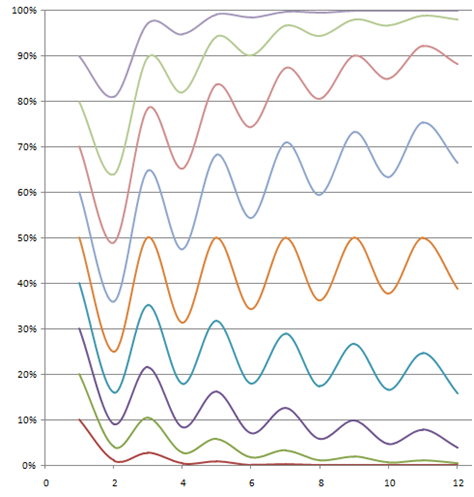
 I'm happy to announce that
I'm happy to announce that 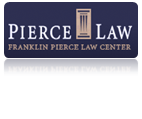 I'm happy to announce that
I'm happy to announce that  Nystrom v. Trex and Home Depot (
Nystrom v. Trex and Home Depot (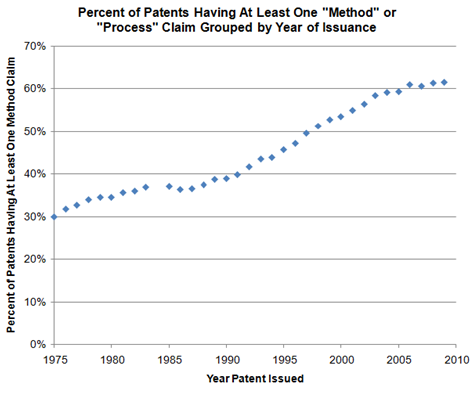
 Martek Biosciences v. Nutrinova and Lonza (
Martek Biosciences v. Nutrinova and Lonza ( Is a human an animal: The four patents in suit cover various aspects of making and using the omega-3 fatty acids. Nutrinova sells allegedly infringing products for human consumption. One of the patents claims a method for achieving high concentrations of the omega-3 acids in an “animal,” and the parties contested whether an a human is an animal. The majority based its decision on the maxim that the patentee is free to be its own lexicographer. “When a patentee explicitly defines a claim term in the patent specification, the patentee’s definition controls.” In its specification, Martek appears to plainly define the term animal in the following sentence: “The term ‘animal’ means any organism belonging to the kingdom Animalia.” It is undisputed that humans are classified within the kingdom Animalia – and thus, humans fit within the claims animal limitation. Q.E.D.
Is a human an animal: The four patents in suit cover various aspects of making and using the omega-3 fatty acids. Nutrinova sells allegedly infringing products for human consumption. One of the patents claims a method for achieving high concentrations of the omega-3 acids in an “animal,” and the parties contested whether an a human is an animal. The majority based its decision on the maxim that the patentee is free to be its own lexicographer. “When a patentee explicitly defines a claim term in the patent specification, the patentee’s definition controls.” In its specification, Martek appears to plainly define the term animal in the following sentence: “The term ‘animal’ means any organism belonging to the kingdom Animalia.” It is undisputed that humans are classified within the kingdom Animalia – and thus, humans fit within the claims animal limitation. Q.E.D.  According to the court, once a patentee defines a term, extrinsic evidence of that term’s meaning “is simply irrelevant.” On remand, the district court will need to consider whether the patent is infringed under the broader definition.
According to the court, once a patentee defines a term, extrinsic evidence of that term’s meaning “is simply irrelevant.” On remand, the district court will need to consider whether the patent is infringed under the broader definition. 